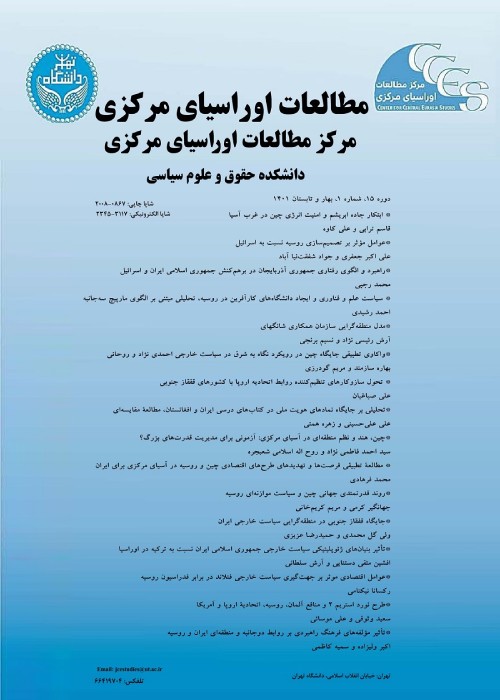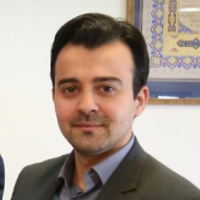The Idea of Pan-Islamism and the Revival of Muslims Textile Industry in the South Caucasus (Case Study: Economic Achievements of Haj Zeynalabdin Taghiyev)
During the late 19th and early 20th centuries, Muslims observed the progressive development of the Western world in all political, social, economic and cultural spheres, while simultaneously observed the decline of Islamic civilization more and more in the aftermath of the austerity measures by their government. Then they started to find reasons and compensate for this regression. Muslim political and social elites found the way to work together and presented the famous idea of “Pan-Islamism” to treat the pains of backwardness. Meanwhile, Muslims living in the Tsarist Russian territories felt this pain through the siege of a progressive Christian state and viewed it as a matter of solidarity among Muslims. Although Muslims were scattered in eastern and western Russian territory, Russia’s western Muslims, especially the South Caucasus Azeris, were more active in Russia than other Muslims who lived in Eastern part of the Russia. This Muslim minority, who were living in the Tsarist Russian Empire which was adjacent to the borders of the Muslim states of Iran and the Ottoman Empire, closely monitored the upheavals in this area because of having close links with the elites of the two lands. The Southern Caucus Azeri Muslims belonged to the two major Islamic religions, Shiites (majority) and Sunnis (minority). Because of ethnic-religious conflicts with Armenian Christians, regardless of any sectarian differences, they insisted on their faith and were proponents of Pan-Islamism. The growing importance of oil in the world and the benefits of oil exploration in Absheron Peninsula and subsequent increase in Caucasian Muslim Azeri communities wealth provided necessary grounds for financial support of that idea.
The idea of Pan-Islamism emerged in contrast to the growing power of the West and from the very beginning it gave way to this kind of thinking about the backwardness of Muslims in comparison to the West. Economy was one of the most important issues in comparing Muslim backwardness in relation with the West. These issues instigated Muslim elites to advocate the idea of Pan-Islamism in order to make their utmost efforts to rebuild Muslim society’s economy and at the same time steps were taken to revive various industries. One of the first industries to be considered in this revitalization was textile. This industry has been one of the most important industries in Islamic lands throughout history. From the very beginning, Muslims had high value for textile and this caused the industry to become widely flourished over the times in all Islamic lands. With the prevalence of machinery in the West, Muslim textile industry which was mostly handmade, lost its ability to compete with the West mechanized industries.
In new era, Muslims attempted to obtain the west new technology and regain the ability to compete. In the late 19th and early 20th centuries, Muslims from the South Caucasus region tasted the bitterness of backwardness more than the rest of the Muslims because of living in the Tsarist Russian Empire with Christian ethnic groups such as the Russians and Armenians. They were always pioneered in obtaining modern manifestations of Western civilization. They adapted this technology from the West and Russia and used it in direction of the excellence of Islam and the happiness and good fortune of Muslims. During the late 19th and early 20th centuries, Muslim economic elites of the South Caucasus were influenced by the progressive views and ideas of prominent thinkers and scholars from the Muslim world, especially the notion of Pan-Islamism in the aftermath of reconstruction of the Islamic civilization. The main feature of this competition was the textile industry. On top of those economic elites; there stood Zeynalabdin Taghiyev, a millionaire businessman from Baku. With the establishment of textile factories in the suburbs of Baku, this industry got out of Russians and Armenians monopoly. This was hardly possible due to the high influence of the owners of those industries and their Christianity affiliations with the Tsarist Russian Government. As the founder of this industry, Taghiyev was one of the followers of the idea of the Pan-Islamism in the South Caucasus region. Contacts with Sayyid Jamāl ad-Dīn Asadābādī, material and spiritual support from the followers of the idea of Pan-Islamism in the South Caucasus lands and other Islamic territories, supporting the publication, distribution of Habal-al-Matin newspaper - the main voice of the idea of Pan-Islamism - and publications of the exquisite Qur’an and sending it to the kings and Muslims in order to alert the issue of unity among Muslim states, were the main manifestations of that trend. The Founding of textile industry in the South Caucasus region was also in line with that idea. The close cooperation of the textile manufacturers of South Caucasus Muslims with a company named Islamiyya in Isfahan and the establishment of the company’s representatives in Baku and other Muslim cities of the Tsarist Russia, the request for the use of the emblem of Lion and Sun as the symbol of a Muslim state on textile products as well as creating employment opportunities for Shiite and Sunni Muslims, showed that apart from any religious intolerance, the Tsarist Russia was a notable manifestation of the desire for unity in the Islamic world.
This paper which is based on descriptive-analytical method and relies on library and documentary sources, raises this question whether the textile industry of the South Caucasus Muslims in the early 20th century was established in line with promoting and strengthening the idea of Pan-Islamism? It is hypothesized that the textile industry of Muslims in the South Caucasus was founded to promote the idea of unity in the Islamic world. Although the issue of the textile industry of South Caucasian Muslims in the 20th century has been repeatedly studied by researchers from the Republic of Azerbaijan, but the relationship between the textile industry of South Caucasian Muslims and the idea of Pan-Islamism has not been investigated in none of those studies. In Iran, the subject has not been investigated thoroughly. In an article titled “The idea of Pan-Islamism among the Muslims of South Caucasus (1870-1920)”, the intellectual and political manifestations of the idea of Pan-Islamism in the South Caucasus region were discussed and the effects of that idea on the behavior of the economic elite and the textile industry of this region received no attention. Moreover, in an article titled “The emergence of modern Iranian capitalism: a case study of Islamiyah Company”, the subject of the textile industry of the South Caucasus was reflected briefly in the form of the Islamiyah Company in just two lines.
- حق عضویت دریافتی صرف حمایت از نشریات عضو و نگهداری، تکمیل و توسعه مگیران میشود.
- پرداخت حق اشتراک و دانلود مقالات اجازه بازنشر آن در سایر رسانههای چاپی و دیجیتال را به کاربر نمیدهد.



